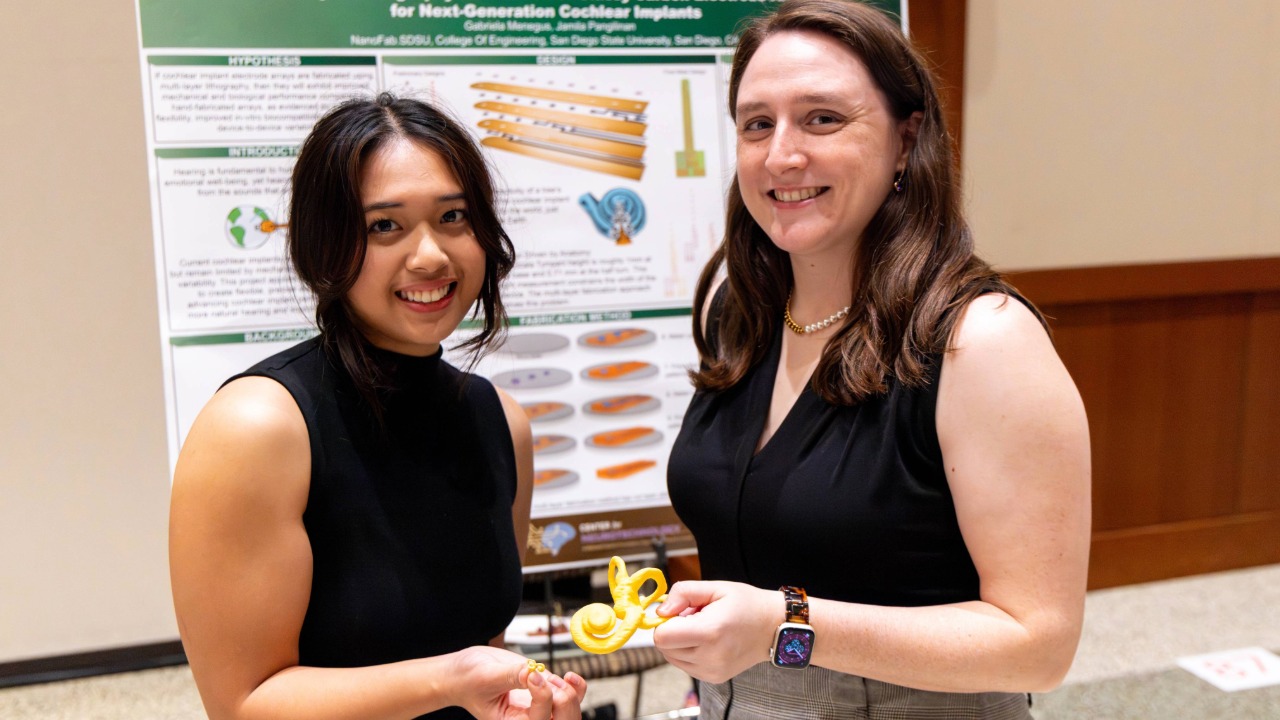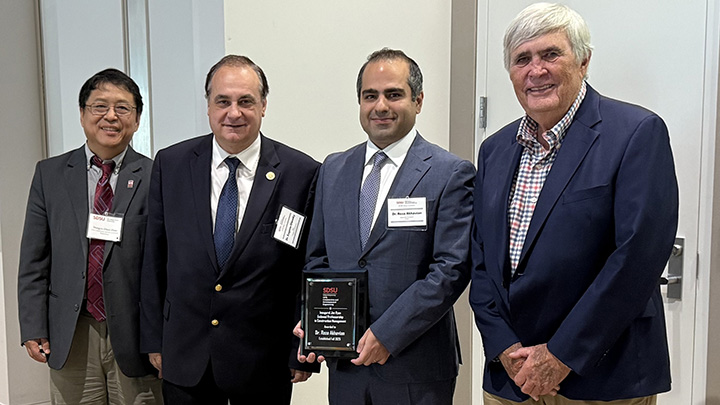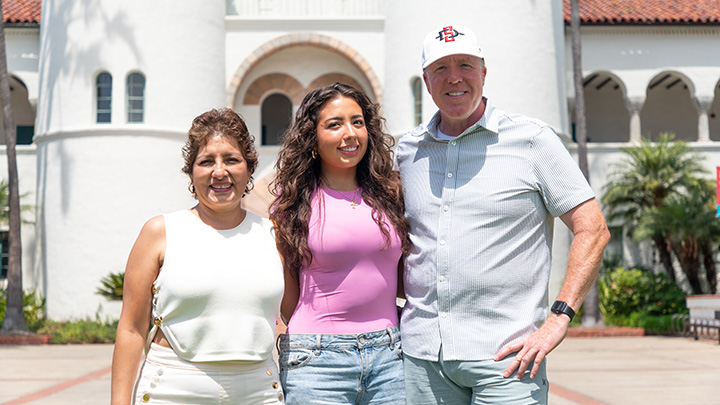Innovation on display at Engineering Graduate Research Symposium.
From robotic skin to flood prediction, masters and doctoral engineering students showcased research projects with real-world impact.

Nearly 90 graduate students assembled to present research projects at the San Diego State University Engineering Graduate Research Symposium on Nov. 8 at the Conrad Prebys Aztec Student Union.
Graduate students showcased their research through posters highlighting innovative and impactful projects across the college's four departments: aerospace; civil, construction and environmental; electrical and computer; and mechanical engineering.
Although complex and technical, the projects focused on real-world applications such as the work of mechanical engineering master’s student Gabriela Menegus, who is developing and testing a new glassy carbon electrode for cochlear implants.
“I want to replace the current models, which are tiny handmade wires that sit inside the ear and send electrical signals to the auditory nerve. This would standardize the device and may suit the human body better,” said Menegus.
Her research project was among dozens of presentations where bioengineering and machine learning intersected across multiple disciplines.
Fifth-year doctoral candidate Qingqing He, a mechanical and aerospace researcher, incorporated a biomechanical strategy while developing robotic skin that mimics human tissue’s ability to feel and self-heal for use in amphibious robotics.
“We are building 3D printers to print functional material for robotic skin,” He said. “We are trying to develop very soft, self-sensing and healing skin that mimics human skin for robots and protective gear for people.”
Artificial intelligence (AI) also emerged as another key component integrated into most research projects throughout the symposium.
Computer engineering master’s student Jiya Rathi said she became “fascinated with nuclear fusion” since first learning about it in elementary school. She said she specifically chose SDSU to pursue the development of a new AI model designed to improve safety mechanisms in nuclear fusion.
Real-world applications
Beyond nuclear reactors, students also explored ways to protect people in everyday life, from strengthening home solar panels against cybersecurity threats to improving early flood warning systems.
“My goal is to develop a faster real-time flood detection system to improve early evacuation for vulnerable and homeless people living in low-lying areas prone to flooding,” explained AmirHossein Adibfar, an SDSU and University of California San Diego joint doctoral student using deep learning models and onsite camera images to reduce reliance on current sensor networks.
Visitors, including faculty, mentors, peers, alumni and industry representatives, circulated through the rows of poster presentations, talking with students who detailed their methodologies and findings.
“This symposium is vital to our engineering graduate students’ educational journey,” said Temesgen Garoma, College of Engineering associate dean of graduate studies and research.
“It provides an opportunity for students to communicate the results of complex research to a broad audience and receive valuable feedback, which is an essential skill for professional success in academia, industry and beyond.”
The event also offered valuable networking opportunities. Doctoral candidate Christopher Davami, who studies aerospace and mechanical engineering, spoke with a NASA representative about his research on landing humans on Mars using spacecraft larger than the Mars Rover and designed to touch down without parachutes.
Davami said his interest in the Mars project began as an undergraduate after a single conversation with Ping Lu, an Albert Johnson Distinguished professor in aerospace engineering who now serves as his research advisor.
“SDSU has a really good culture of supporting research, no matter what your field of interest is,” said Davami. “I encourage undergraduates to ask professors about their projects and explore research opportunities.”
College of Engineering Dean Eugene Olevsky concluded the symposium with an awards ceremony recognizing 12 students for the quality, originality and potential impact of their work, and the effectiveness of their presentations.
“Research gives them the opportunity to apply what they learn in the classroom and develop the creativity and problem-solving skills that define SDSU engineers,” Olevsky said.


